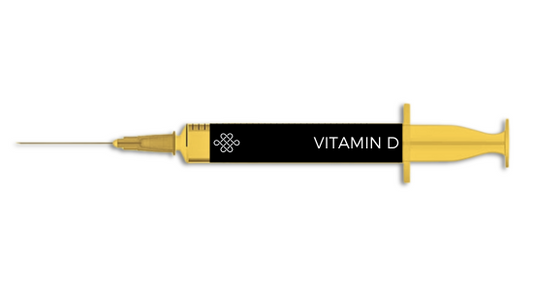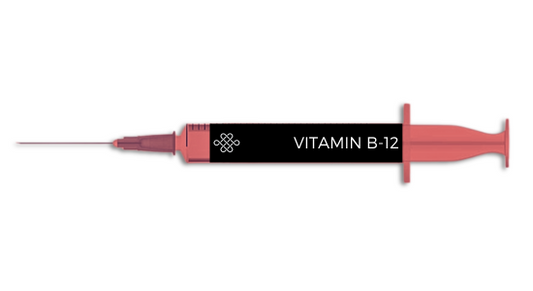Popular Weight Loss Injections; Ozempic, Zepbound, Semaglutide (GLP-1 receptor agonists) and Your Health: Managing Potential Side Effects and Nutrient Deficiencies


Ozempic (semaglutide), Zepbound (tirzepatide) and similar GLP-1 receptor agonists, are primarily used to manage type 2 diabetes and, in some cases, obesity. These medications mimic the incretin hormone GLP-1 (glucagon-like peptide-1), which has several effects on the body, including stimulating insulin secretion, inhibiting glucagon release, and slowing gastric emptying. The latter effect, which delays the passage of food from the stomach to the small intestine, can be a double-edged sword: while it helps control blood sugar levels and promote satiety (fullness), it can also lead to nutrient deficiencies.
Mechanisms Leading to Nutrient Deficiency
Reduced Food Intake:
Appetite Suppression: GLP-1 receptor agonists increase satiety and reduce appetite, which often leads to reduced overall food intake. This can inadvertently result in lower consumption of essential nutrients.
Caloric Restriction: Patients using these medications might consume fewer calories overall, sometimes not meeting their nutritional needs if their diet is not well-balanced.
Slowed Gastric Emptying:
Delayed Digestion: By slowing gastric emptying, the absorption of nutrients might be altered. While the nutrients are still absorbed, the rate and efficiency of absorption can change, potentially leading to deficiencies over time.
Nausea and Vomiting: Some patients experience nausea and vomiting as side effects, which can further reduce food intake and nutrient absorption.
Gastrointestinal Symptoms:
Malabsorption: Chronic gastrointestinal symptoms such as diarrhea can occur with GLP-1 receptor agonists, which can lead to malabsorption of nutrients, particularly fat-soluble vitamins (A, D, E, K) and minerals.
Specific Nutrient Deficiencies
Vitamins and Minerals:
Vitamin B12: Reduced intake and absorption can lead to deficiencies in Vitamin B12, which is essential for red blood cell formation and neurological function.
Iron: Decreased consumption of iron-rich foods can result in iron deficiency anemia.
Fat-Soluble Vitamins (A, D, E, K): Malabsorption issues may affect the absorption of these vitamins.
Protein: Reduced overall food intake can lead to lower protein intake, which is essential for muscle maintenance and overall body function.
Electrolytes:
Magnesium and Potassium: Diarrhea and altered absorption can impact the levels of electrolytes like magnesium and potassium.
Nutritional Monitoring:
Recommendations for Micronutrient Assessment
-
Regular Monitoring: Schedule periodic assessments (e.g., every 3-6 months) to monitor changes in nutrient levels, especially in patients showing symptoms of deficiencies or those with significant weight loss. Regular monitoring of nutritional status, including blood tests for key vitamins and minerals, can help detect deficiencies early.
-
Dietary Counseling: Provide patients with dietary counseling to emphasize nutrient-dense foods and possibly recommend supplements based on individual needs.
-
Collaborative Care: Work with a multidisciplinary team, including dietitians and nutritionists, to ensure a holistic approach to patient health and nutrition.
Dietary Adjustments:
Ensuring a balanced diet that is nutrient-dense can help mitigate the risk. Patients should be encouraged to consume a variety of foods rich in essential nutrients.
Supplements:
In cases where dietary intake may not be sufficient, healthcare providers might recommend vitamin and mineral supplements to prevent deficiencies.
-
Bone Health: Nutrients like calcium and vitamin D are vital for bone health. Since semaglutide affects nutrient absorption, monitoring these levels is essential to prevent long-term complications like osteoporosis.
Optimization of Therapy
-
Customized Treatment Plans: Regular assessment of micronutrient levels allows healthcare providers to customize dietary recommendations and supplement regimens, ensuring that patients receive comprehensive care.
-
Side Effect Management: Identifying and addressing micronutrient deficiencies can help mitigate potential side effects associated with semaglutide, improving overall patient compliance and outcomes.
Managing Side Effects:
Addressing gastrointestinal side effects promptly can help maintain adequate nutrient absorption.
Common side effects of semaglutide include:
Nausea
Vomiting
Diarrhea
Abdominal pain
Constipation
Potential risk of pancreatitis
Hypoglycemia (when used with other diabetes medications)
Possible kidney injury
Gallbladder issues
To support patients taking GLP-1 your wellness services can be very beneficial in mitigating some of these side effects and enhancing overall well-being:
1. IV Hydration Therapy
IV hydration therapy can help manage nausea and vomiting and ensure hydration. It can also replenish electrolytes lost due to gastrointestinal side effects such as diarrhea or vomiting. IV hydration can also replenish micronutrients specific to your individual needs and symptoms based on micronutrient assessments.
2. Vitamin Shots
Vitamin B12 shots could be particularly useful as some patients on semaglutide might experience fatigue or weakness. B12 is essential for energy production and can help combat these symptoms. Vitamin injections can also be customized to meet individual micronutrient needs.
3. Red Light Therapy
How Red Light Therapy Works
Red light therapy (RLT) offers a promising, non-invasive option for tightening loose skin following rapid weight loss. Its ability to stimulate collagen and elastin production, improve blood circulation, and promote cellular repair makes it a beneficial treatment for enhancing skin firmness and overall appearance. For best results, it's advisable to use RLT consistently and seek guidance from a professional.
Red light therapy uses low-level wavelengths of red light to penetrate the skin and promote various healing and rejuvenating processes. The light is absorbed by the cells, which can lead to several beneficial effects, including:
-
Collagen Production: RLT stimulates fibroblasts, the cells responsible for collagen production. Collagen is a protein that gives the skin its firmness and elasticity, which can be particularly beneficial for tightening loose skin.
-
Elastin Production: RLT can also promote the production of elastin, a protein that helps skin return to its original shape after stretching or contracting.
-
Improved Blood Circulation: The therapy enhances blood flow to the treated areas, which helps deliver essential nutrients and oxygen to the skin, promoting healthier and more resilient skin.
-
Cellular Repair and Regeneration: RLT accelerates the repair and regeneration of skin cells, which can help improve skin texture and reduce the appearance of sagging or loose skin.
Benefits of Red Light Therapy for Skin Tightening
-
Non-Invasive: RLT is a non-invasive treatment, meaning it doesn't require surgery or downtime.
-
Minimal Side Effects: It generally has few side effects, making it a safe option for most people.
-
Convenience: RLT can be done in clinics or with home devices, making it accessible.
Considerations for Use
-
Consistency: Regular sessions are typically needed to see noticeable results. The frequency and duration of treatments can vary depending on the device and the individual’s specific needs.
-
Combination with Other Treatments: RLT can be combined with other skin tightening treatments, such as topical creams, radiofrequency treatments, or micro-needling, for enhanced results.
-
Professional Guidance: Consulting with a skincare professional can help determine the most effective treatment plan and ensure the therapy is tailored to your needs.
Effectiveness
While RLT shows promise for skin tightening, results can vary based on factors like age, skin type, the extent of skin laxity, and overall health. Clinical studies and user experiences suggest that RLT can be an effective tool for improving skin firmness and elasticity, especially when used consistently and in conjunction with other healthy lifestyle practices.

4. Infrared Sauna Therapy
Infrared saunas can be a valuable addition to a weight loss program, particularly when used alongside semaglutide. Their combined effects on metabolism, detoxification, stress reduction, and overall well-being can enhance weight loss outcomes and support a holistic approach to health and fitness.
Semaglutide, a GLP-1 agonist, helps with weight loss by reducing appetite, slowing gastric emptying, and promoting a feeling of fullness. When combined with the benefits of infrared sauna therapy, the overall weight loss regimen can be more effective. Here’s how they can work together:
-
Enhanced Metabolism: While semaglutide helps regulate appetite and calorie intake, infrared saunas can enhance metabolism through increased caloric burn and improved circulation, potentially accelerating weight loss results.
-
Improved Exercise Recovery: Semaglutide users who engage in physical activity for weight loss can benefit from the muscle recovery and pain relief provided by infrared saunas, leading to more consistent and effective workouts.
5. Body Composition Testing
Regular body composition testing can help track the effectiveness of the medication in terms of fat loss and muscle retention. This data can provide valuable feedback to patients and healthcare providers to adjust treatment plans accordingly.
GLP-1 agonists, such as semaglutide, have been shown to be effective in promoting weight loss. The percentage of weight loss can vary depending on the specific medication, dosage, and individual factors such as adherence to treatment, diet, and exercise. Here's a general overview:
-
Semaglutide: Clinical trials have shown that semaglutide can result in significant weight loss. In the STEP (Semaglutide Treatment Effect in People with obesity) trials, participants lost an average of around 10-15% of their body weight over a period of 68 weeks when taking semaglutide 2.4 mg weekly.
-
Liraglutide: Another GLP-1 agonist, liraglutide, marketed as Saxenda for weight loss, has shown weight loss of approximately 5-10% over a year in clinical trials.
-
Exenatide and Other GLP-1 Agonists: Other GLP-1 agonists like exenatide have also demonstrated weight loss effects, although typically less pronounced than semaglutide and liraglutide, with weight loss percentages generally around 3-5%.
The weight loss associated with GLP-1 agonists like semaglutide primarily targets fat mass, but some loss of lean body mass, including muscle and bone mass, can occur. The extent to which muscle and bone mass are affected varies and is influenced by several factors such as the duration of weight loss, the degree of caloric restriction, physical activity levels, and individual differences. Here are some key points to consider:
-
Fat vs. Lean Mass Loss: Studies have shown that while a significant portion of weight loss with GLP-1 agonists is due to fat loss, there is also some reduction in lean body mass. For instance, in the STEP 1 trial involving semaglutide, approximately 39% of the total weight loss was lean mass (including muscle and bone) and the remaining 61% was fat mass.
-
Muscle Mass: Lean mass includes muscle tissue, and preserving muscle mass during weight loss is crucial for maintaining metabolic health and physical function. Engaging in resistance training and ensuring adequate protein intake are strategies that can help mitigate muscle loss during weight loss.
-
Bone Mass: Weight loss can also lead to a decrease in bone density. This is a concern, especially in populations at risk for osteoporosis. Regular weight-bearing exercise and adequate intake of calcium and vitamin D are important for maintaining bone health during weight loss.
-
Clinical Recommendations: Healthcare providers often recommend combining pharmacotherapy like GLP-1 agonists with lifestyle interventions to optimize body composition changes. This can help maximize fat loss while minimizing the loss of muscle and bone mass.
Overall, while GLP-1 agonists are effective in reducing body weight, a comprehensive approach that includes exercise and nutritional strategies is essential to preserve muscle and bone health during weight loss. Find a provider who will discuss monitoring, side effects, and a comprehensive strategy to resetting your metabolism so that you can have long term success with weight management after you discontinue these medications.
To discuss whether this medication is right for you and to learn how we can support your overall health and wellness journey before, during, and after the use of this medication.
Share Post
6 Likes
11 Views
0 comments






